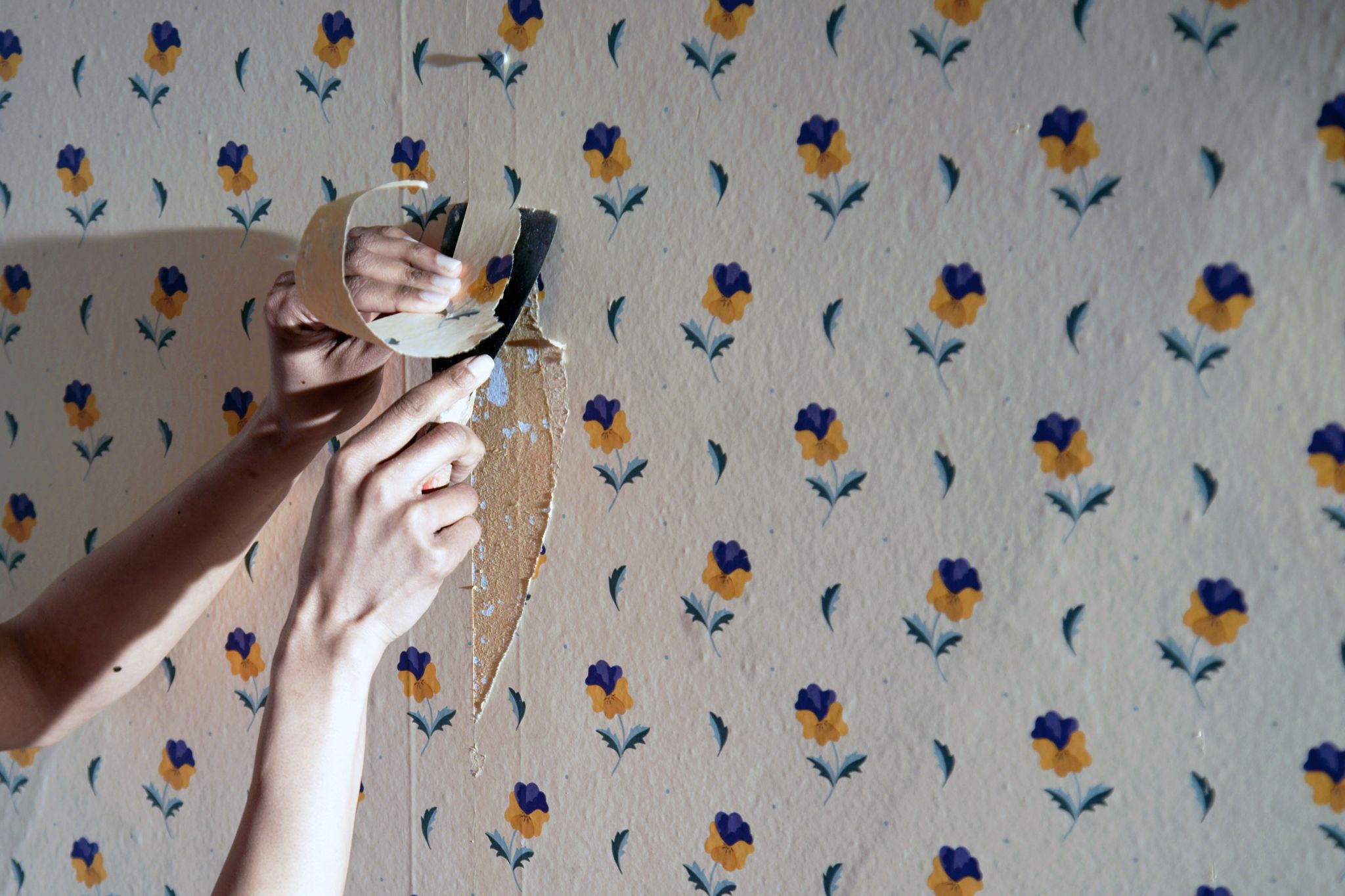Key Takeaways
- Wallpaper primer makes wallpaper removal much easier because it prevents glue from soaking into walls.
Scroll to: First, Check for Wallpaper Primer - Provided you really soak the wallpaper, water works well to remove almost any kind of wallpaper that hasn’t been primed.
Scroll to: Trust in the Power of Water
What would you do to avoid removing wallpaper? Probably whatever you could, judging by the stories of woe we found on the web.
DIYer Rachel Meeks wrote in her "Small Notebook" blog that she was so overwhelmed by the prospect of removing 40-year-old wallpaper from several rooms that she actually knocked down a couple of walls rather than spend time scraping.
If only she'd checked. She would have found it's actually a fairly simple DIY project so long as you have the right info, tools, and expectations. (It's gonna take some time!)
First, Check for Wallpaper Primer
Anyone who's managed to remove wallpaper lickety-split likely (and luckily) had walls that were sealed with wallpaper primer before they were papered, says Geoff Sharp, owner and founder of Sharper Impressions Painting Co., which operates in several cities, including Atlanta and Indianapolis.
Priming became more common in the 1990s. It prevents the wet glue from soaking into plaster or drywall and forming a tough-to-break bond.
Loosen a corner or seam with a putty knife and pull. If it peels off in a sheet, you got primed!
Being able to peel off wallpaper in complete or partial sheets after lifting the corners with a putty knife is called dry stripping.
With well-primed walls, dry stripping should work for the entire job and you could finish a room in a couple of hours at most.
Let Water Remove Wallpaper
"Wallpaper glue is water based, so water is a super-efficient remover," says vlogger Chris Berry, known as The Idaho Painter, who owns B&K Painting in Boise. "It works so well, we use it instead of chemical wallpaper strippers on both drywall and plaster."
Here's what to do with water:
- Score or perforate the paper and its backing in sections so water can soak through and loosen the glue. The pros recommend a scoring tool called the PaperTiger (under $20) because it doesn't harm the wall.
- Douse the perforated paper with hot water using a pump or compression sprayer (under $50). OK, wallpaper-phobics, here's where the myth that DIY removal is the worst gets legs. The big mistake most people make is using a regular old spray bottle or damp rag to wet the paper. This leads to hours of fruitless scraping (and griping) because the paper and its backing don't get sufficiently saturated. The sprayer, on the other hand, gives you the firepower to really soak the glue.
- Let the paper soak for about 15 minutes and scrape it off with a putty knife.
It could take you six hours for an average room, but that's way better than the days of effort it could take if you don't know what you're doing.
Add Steam Power for Quicker Wallpaper Removal
Another option for harnessing the power of H20 is steam.
Wallpaper steamers, which you can rent from home improvement or hardware stores, are effective and "much neater [than water] because you're using moist heat," says Jason Stratos, owner of Stratos Painting Co. in Springfield, Mass.
But they can be tough for steamer newbies. They're bulky and awkward to use (done an upper body workout lately?) and it's possible to burn yourself, warns Gina Paris of Gina Paris Design in Conneaut Lake, Pa.
So, if all this sounds like a hassle, stick with a compression sprayer, which is easier to manage.
If you have woven grasscloth: factor in the extra, painstaking step of tearing off as much of the top layer as possible to expose the backing first, because "the material rips off in thin, stringy shreds," says Berry.
If wood paneling is underneath: They are the one exception to using water, since water and wood don't mix. In that case, use a gel chemical stripper that won't penetrate the wood.
Avoid the Fumes of Chemical Strippers
If water is so effective, why does stripper exist? Some pros prefer it because stripper dissolves glue faster than water. But it likely emits low-grade VOCs, or toxic chemicals.
And water is cheap. So why not go au naturel? By the way, if you use stripper, the pros recommend DIF Ultra Concentrate (pricing varies, ranging from about $8.50 to $35 online).
Don't Fall for Removing Wallpaper With Fabric Softener
Through the interweb grapevine, you may have heard that fabric softener (diluted with water) is a brag-worthy way to remove old wallpaper. But we couldn't find a single expert who agrees.
“Fabric softener just makes the process more complicated, smelly, and even messier than using just plain old water," says Berry. You end up mixing glue with the chemicals from fabric softener. In addition, Berry says fabric softener may harm drywall.
So when it comes to removing wallpaper, the happiest journey (assuming your walls aren't primed) involves water — and patience.
Christina Hoffmann contributed to this article.
Related: 7 Painting Hacks to Get the Look of a Pro -- Without the Pro Price
